Fiji Mission Trip (the Beginning)
As we drove southwest on the island of Taveuni the impact of the category 5 hurricane that struck last year are still evident. Yet even where homes were damaged the people have stayed. Most of the houses have no foundations and no glass in the windows, which is typical of the local villages. Those that were damaged have partial roofs. Curtains and laundry were blowing in the sea breeze. We passed by the location where Marist missionary priests first came ashore around 1844 and then stopped at Holy Cross parish which also has a community center, a grade school, middle school and high school in US terms. The schools collectively are called Holy Cross College.
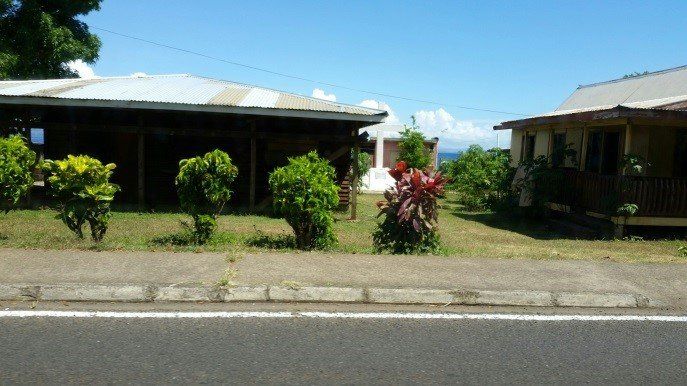
Amidst the glorious beauty of the landscape stands a magnificent church built 150 years ago. The 12- inch thick were constructed of lava stone and a concrete mixture made from ground and burned coral. The windows are painted glass, some with dates still visible such as one from 1872. The parish holds three Masses every Sunday and has extensive school and community activities on the grounds. Mass attendance is often a mix of the 7000 members plus some global tourists.
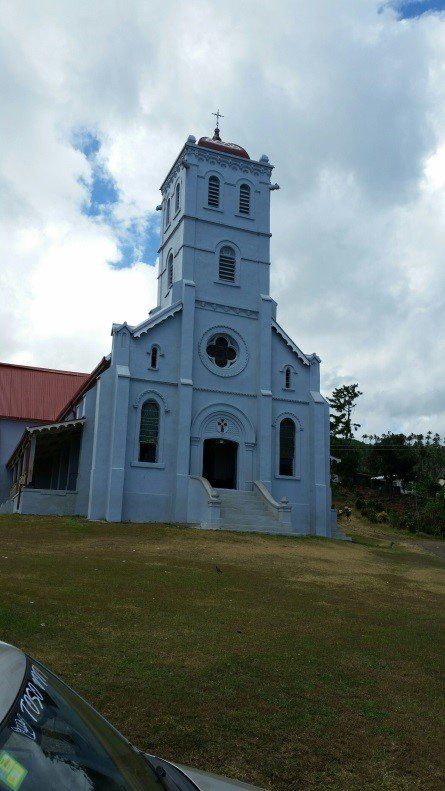 Out front is a statue of St. Theresa of Lisieux, who had a devotion to missionaries, maintained by the Marist brothers and priests who still run this parish and 3 others.
Out front is a statue of St. Theresa of Lisieux, who had a devotion to missionaries, maintained by the Marist brothers and priests who still run this parish and 3 others.
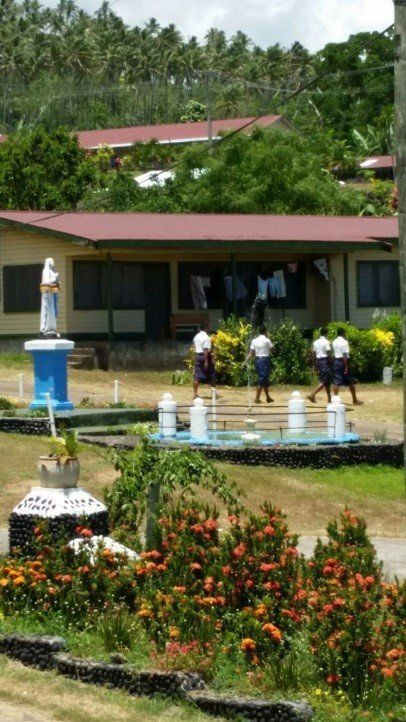 Msgr. Lofton was excited to explain the progress that has been made on the church. When he met the pastor in 2010 it had been in very poor condition. Since then the church has been repainted, floors have been fixed including replacements for large holes that had rotted and fallen in, and the ceiling has been cleaned. More is needed to keep the church in repair and to respect the history of the Marist brothers.
Msgr. Lofton was excited to explain the progress that has been made on the church. When he met the pastor in 2010 it had been in very poor condition. Since then the church has been repainted, floors have been fixed including replacements for large holes that had rotted and fallen in, and the ceiling has been cleaned. More is needed to keep the church in repair and to respect the history of the Marist brothers.
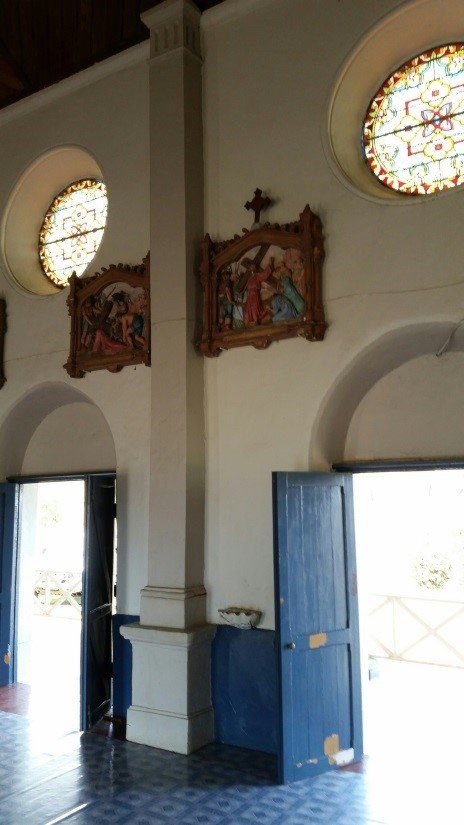 The windows in the church are painted glass and have been in place since the church was built. One of the current projects is to place plexiglass on the outside of the windows to protect them. On some windows the dates are visible.
The windows in the church are painted glass and have been in place since the church was built. One of the current projects is to place plexiglass on the outside of the windows to protect them. On some windows the dates are visible.
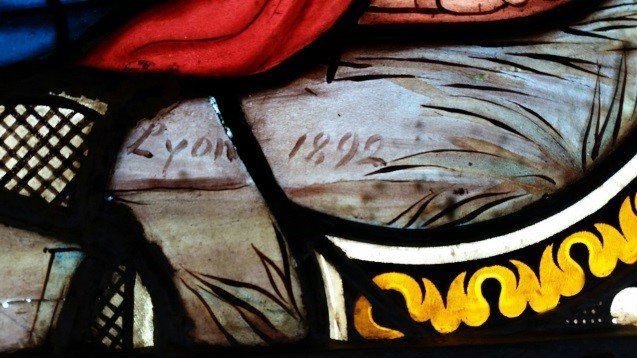
The next day I saw more evidence of the importance of the physical church to the people. One of the students was wearing a shirt that was clearly a commercially available shirt. It featured a large image of the façade of Holy Cross church on the front.
In a side room near the altar we met John and Akaletta who were making the hosts for the upcoming week. They were thrilled to see Msgr. Lofton and talked about how happy they were that the floor was fixed. They were mixing up a dough and pressing it with a recently installed electric press and then Akaletta was hand punching each round host. She was very careful to be consistent with them so each was the same.
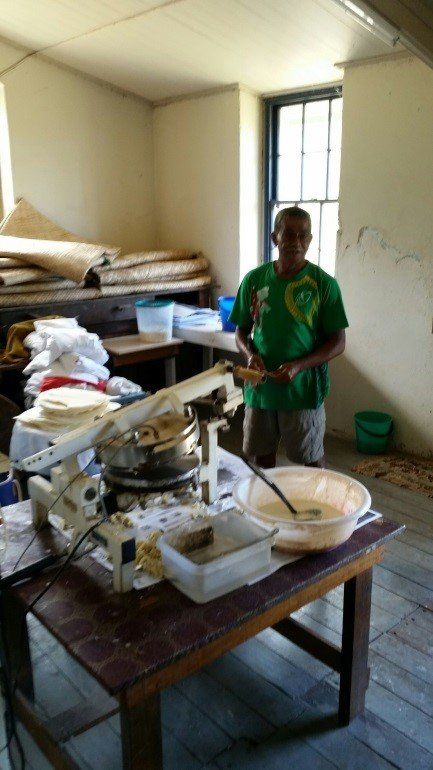 |
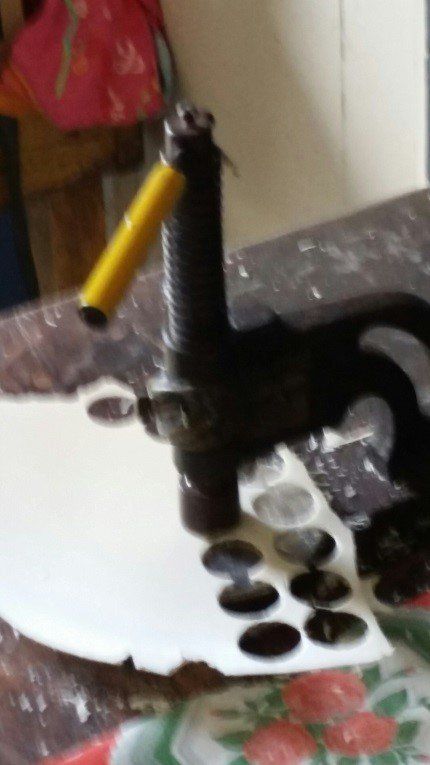 |
Once outside we became part of the busy vibrant atmosphere that is the school grounds and the residence locations for the students. We were met by smiles and calls of “Bula”(hello) from everywhere. It is mandatory for students to live on the school/parish campus to attend school. This eliminates the need for any transportation to class. The church pays for uniforms, food and most of the room and board for the students. Parents pay $12 Fijian dollars a month (approximately $6 American).
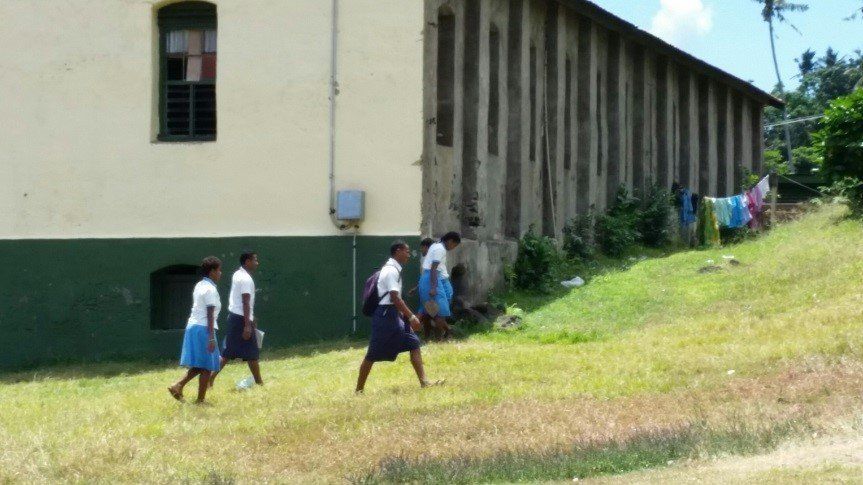
The students are all tidy in their uniforms, but the residence halls have broken and missing windows and the back side of the boy’s residence structure is crumbling from neglect. The classrooms are clean, and the ones we saw had wooden desks but no technology and few whiteboards in the rooms.
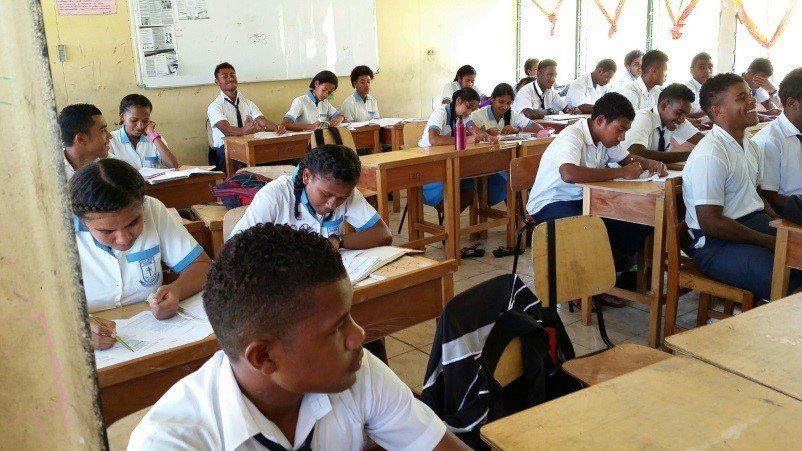
We met with the principal, Mrs. Basilisa Lalama, who was very interested in any resources that would help to teach the Catholic faith. She said that 70% of the students of the school are Catholic and the school requires the Catholic students to attend religious education classes. The archdiocese developed a religion curriculum in the 1990s that is still used today. The books are never replaced, so they show the wear from uses. Mrs. Lalama said that as they are damaged or lost, they do not have funds to replace them.
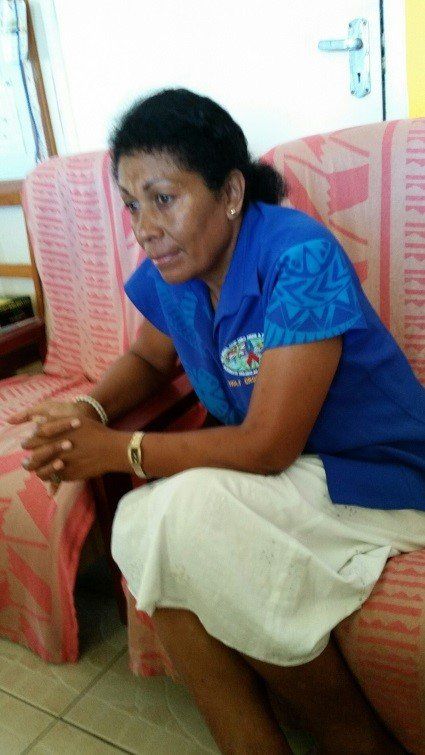 “The catechists are busy with other things, “Mrs. Lalama said. “The religion classes are taught by the teachers, most of who have no Catholic education.” In many of the classes they just sing songs.” Catechists only occasionally provide instruction for sacrament preparation at the school. She said that resources in English are appropriate and they do not need them translated into Fijian.
“The catechists are busy with other things, “Mrs. Lalama said. “The religion classes are taught by the teachers, most of who have no Catholic education.” In many of the classes they just sing songs.” Catechists only occasionally provide instruction for sacrament preparation at the school. She said that resources in English are appropriate and they do not need them translated into Fijian.
We also were able to spend time with Fr. Mica, an associate priest for Holy Cross parish. Fr. Mica is from Fiji but spend the last couple years at a parish in Papua New Guinea. “PNG is like living in an action movie,” he said, “ with shootings and other violence happening at all times”. The system is challenging but he enjoyed the devotion of the people at his parish.
“This is good!” Fr. Mica was very happy to hear about our work to review resources for education and catechesis. “We need something to help the catechists with marriage preparation. They are not comfortable with the topic. 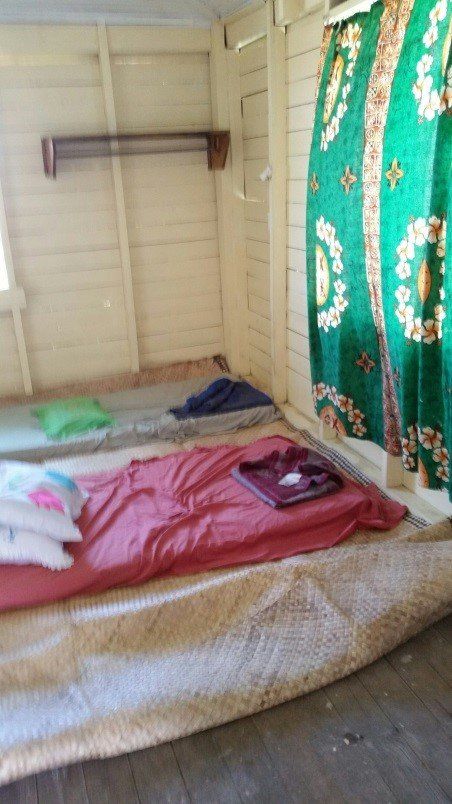 It would be good to have it translated into Fijian”. As we talked it became clear that they are lacking basic instruction materials on the Catholic Faith for adults and children, and they definitely need materials that help people prepare to receive the sacraments.
It would be good to have it translated into Fijian”. As we talked it became clear that they are lacking basic instruction materials on the Catholic Faith for adults and children, and they definitely need materials that help people prepare to receive the sacraments.
“What is there for children?” he asked, “ we are doing a weekend session and we want to have something we can use to teach them, maybe sacraments or maybe the rosary. We need everything. I created a facebook page for the parish and am starting a project to ask parishioners about what they need so we can understand better where to focus.”
When you look around the rectory you see that the priests and brothers sleep on mattresses on the floor. The building is in good repair with a new roof, but few other comforts. The Marist missionaries remain devoted to serving the people first. They have provided a strong Catholic presence for over a century.
.jpg)
.jpg)

.jpg)
